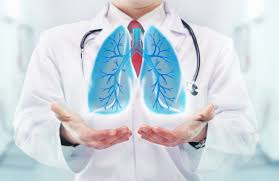- Home
- Editorial
- News
- Practice Guidelines
- Anesthesiology Guidelines
- Cancer Guidelines
- Cardiac Sciences Guidelines
- Critical Care Guidelines
- Dentistry Guidelines
- Dermatology Guidelines
- Diabetes and Endo Guidelines
- Diagnostics Guidelines
- ENT Guidelines
- Featured Practice Guidelines
- Gastroenterology Guidelines
- Geriatrics Guidelines
- Medicine Guidelines
- Nephrology Guidelines
- Neurosciences Guidelines
- Obs and Gynae Guidelines
- Ophthalmology Guidelines
- Orthopaedics Guidelines
- Paediatrics Guidelines
- Psychiatry Guidelines
- Pulmonology Guidelines
- Radiology Guidelines
- Surgery Guidelines
- Urology Guidelines
Elevated tissue iron a risk factor for Aspergillus Infection in lung transplant recipients

Dr.Mark Nicolls, Stanford University Professor in Pulmonary and Critical Care Medicine conducted a study to investigate why lung transplant patients are more vulnerable to fungus, Aspergillus fumigatus and found that Iron enables it to take root in lung transplant recipients.The researchers identified elevated tissue iron as a risk factor for life-threatening fungal infections in lung transplant recipients.The study has been published in Science Translational Medicine.
Aspergillus fumigatus is an extremely common mold, prevalent in even the most pristine hospital settings. “It’s everywhere — we inhale thousands of these spores per day,” said Joe Hsu, MD, assistant professor of medicine and lead author of the study. One-third of lung transplant recipients develop Aspergillus-related diseases, including severe asthma and often-fatal lower respiratory infections. The leading cause of death among these patients is transplant rejection, which the mold accelerates dramatically.
There are many risk factors for Aspergillus infection that are difficult to address in lung transplant recipients. Transplant patients are given medications that leave them less able to ward off infections, but without these drugs, their immune systems would attack their new lungs. During recovery, patients have no ability to cough up invading pathogens, making them especially vulnerable to the omnipresent spores. This is because the lung transplant procedure disrupts signals from the vagus nerve, which controls the cough reflex. Patients are usually put on antifungal medications in an attempt to prevent infection, but these pathogens are becoming more drug-resistant over time.
‘Like fertilizer for Aspergillus’
All lung transplants carry these known risks, but not all lung transplants result in Aspergillus infections. Something causes the organism to behave differently in cases of infection, Hsu said. The study identified iron as a critical factor. “Iron is like fertilizer for the Aspergillus,” Nicolls said.
Hsu was interested in finding the Aspergillus trigger switch — the factor that prompts it to invade tissue. He studied the pathogen in mouse models by transplanting windpipes from one mouse to another. Observing the rejection process, he found that the transplanted tissue bled and accrued high levels of iron. Hsu biopsied human transplant patients and found the same distribution of iron, with higher levels in the transplanted tissue than the host. Thinking he may have found the trigger, Hsu introduced Aspergillus into the mice, comparing how it acted with and without access to iron.
He found that elevated iron prompted Aspergillus to invade. In experimental conditions that provided the pathogen more iron, it invaded the transplant. The more iron, the deeper the invasion progressed into the tissue. The results indicate increased iron is a major determinant of Aspergillus invasion. Differences in iron levels between transplant patients seem to explain why some become infected while others don’t. “You could have lots of Aspergillus in the airway, which is fine because its everywhere, but it wouldn’t penetrate the tissue unless there was iron beneath it,” Nicolls said.
A potential treatment
The study suggests infection can be prevented by starving the Aspergillus organism of iron. Without iron to fuel it, the mold doesn’t invade. The depth of invasion decreased in mice injected with an iron-reducing chemical. The result suggests a novel treatment route. Rather than targeting Aspergillus itself, doctors could modify tissue iron levels to change the organism’s behavior, Hsu said. His next step is to study this treatment approach in humans, he said. High iron is characteristic of other pulmonary diseases, and Hsu predicts this methodology may be applicable across the field of pulmonary care.
Nicolls is an inventor on a new patent for a chemical solution that captures excess iron to help prevent lung-transplant failure. He developed the technology with a number of collaborators, including Geoffrey Gurtner, MD, professor of surgery at Stanford, and Jayakumar Rajadas, PhD, director of Stanford’s Biomaterials and Advanced Drug Delivery Lab, who is also a co-author of the study.
“The capacity to deliver these compounds directly to the lungs is novel,” Hsu said. “For the first time, we have a new way to treat these infections aside from antibiotics that try to wipe out the organism itself.” The solution can be applied like a paint during surgery, inhaled into the lungs or injected intravenously.
The team’s work is an example of Stanford Medicine’s focus on precision health, the goal of which is to anticipate and prevent disease in the healthy and precisely diagnose and treat disease in the ill.
Other Stanford-affiliated co-authors of the study are Karl Clemons, PhD, senior lecturer in medicine; Mohammed Inayathullah, PhD, basic life research scientist; Raymond Sobel, MD, professor of pathology; Hasan Nazik, MD, visiting research scholar; Venkata Pothineni, PhD, basic life science research associate; Shravani Pasupneti, MD, postdoctoral scholar; and David Stevens, MD, professor of medicine.
Researchers at the Veterans Affairs Palo Alto Health Care System, Medical University Innsbruck and University of Maryland School of Medicine also contributed to the study.
The work was supported by the National Heart, Lung and Blood Institute (grants 1K08HL122528, R01HL095686 and P01HL108797); the Austrian Science Foundation; and the Parker B. Francis Family Foundation.
Stanford’s Department of Medicine also supported the work.

Disclaimer: This site is primarily intended for healthcare professionals. Any content/information on this website does not replace the advice of medical and/or health professionals and should not be construed as medical/diagnostic advice/endorsement or prescription. Use of this site is subject to our terms of use, privacy policy, advertisement policy. © 2020 Minerva Medical Treatment Pvt Ltd